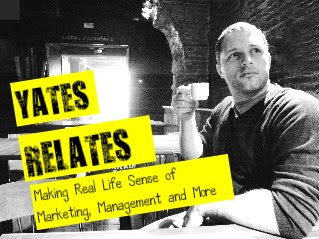Your business has the resources, talent and willingness to innovate, but for some reason your business isn't recognised for striding ahead and being the one to try something new. Perhaps you have tried some product diversification, or an "industry first" project, but it has'nt quite worked out.
Strategic marketing experts like to talk about how businesses can handle innovation. How to take the ideas that come out of the business and it's customers and drive them forward and get them over the line. There is less discussion, however, on just how capable businesses are at preparing for innovation.
Would you ask an overweight 45 year old man to run a 100m dash against Usain Bolt and expect him to win? You might, but he will be on his knees before he has hit the 50m mark, and it will have taken him ten minutes to get there.
The point is that if you need a business to innovate, you first need to make an assessment of the potential of your organisation to do so, and that can sometimes prove difficult.
I have developed an Innovation Capability Assessment Matrix to help identify which elements of the business struture are working as blockers to innovation, and which elements have the potential to promote and facilitate it. Completion of this scoring based mechanism should allow a quick understanding as to how able your business is when it comes to handling innovation, and will give tips on how to make positive changes to facilitate innovation further.
 |
| The above model is an example of how an organisation with a score of 20 would respond, and is not indicative of a particular business |
The Matrix is based upon 5 key blockers to innovation:
1. Perceptual
2. Cultural
3. Environmental
4. Emotional
5. Intellectual
It is a simple premise. 10 questions, each answer gets a point score between 1-4. The closer you are to 40 at the end of it, the more capable of innovation your business is. Give it a try. The questions are as follows:-
1. What percentage of new positions are filled with recruits from outside of the business?
- 0-25% (1 point)
- 25-50% (2 points)
- 50-75% (3 points)
- 75-100% (4 points)
2. How do salaries and benefits packages in your business compare to those of the industry average?
-Below Average (1)
- Average (2)
- Above Average (3)
- Excellent (4)
3. Does your organisation have a widely used and functioning ideation programme?
- No, nothing (1)
- Yes, but it is under used (2)
- Yes, for less than 2 years (3)
- Yes, for 2 years or more (4)
4. Does your organisation have a sustained and functional reward and recognition programme?
- No, nothing (1)
- Yes, but it is under used (2)- Yes, for less than 2 years (3)
-Yes, for 2 years or more (4)
5. Number of special projects delivered this year versus £1m profit?
- No special projects (1)
- Average 1 per million (2)
- Average 3 per million (3)
- Average 5 per million (4)
6. Does your business have a dedicated cross functional innovation team in place?
- No (1)
- We have individuals who tend to get special projects but no dedicated skill set (2)
- Yes, but they also have busy day jobs (3)
- Yes, we have a dedicated innovation project team (4)
7. What is the average percentage of year on year growth of your core product or service?
- 0-2% (4)
- 2-3% (3)
- 3-4% (2)
- 4% + (1)
8. How many new products or diversification programmes have you taken to market in the last 3 years?
- None (1)
- 1 (2)
- 2 (3)
- 3+ (4)
9. What percentage of special projects in the last year have included the introduction of technology new to the business?
- 0 - 25% (1)
- 25-50% (2)
- 50-75% (3)
- 75-100% (4)
10. What percentage of your innovations in the last year have beat competitors to the market?
- 0 - 25% (1)
- 25-50% (2)
- 50-75% (3)
- 75-100% (4)
Here is a brief assessment of your score:-
30-40 Innovation Fascination
You are willing to spend money on the right people and have the ability to attract high calibre candidates with specialist knowledge and experience. You like to take a risk and have a positive approach to change. Your innovation infrastructure is sound, and you are likely to take innovative ideas from across your business or your customers, and have the ability to move forward quickly.
20-30 Innovation Probation
Your colleagues and customers are a great resource of innovative ideas, and often you do deliver innovative projects that have a positive benefit to the business. This may however take place in the shadow of your competitor's innovations, perhaps because you feel restricted on budget and resources or prioritise your core product or service. You will probably find it easy to graduate your innovation programme to the next level with some concerted effort.
10-20 Innovation Consternation
Your ability to handle innovation is potentially limited. You may sit as an average player in the industry when it comes to reward and recognition, employee benefits and ideation programmes. You are not currently a business that takes a proactive approach to innovation.
0-10 Innovation Constipation
It is likely that you under value your workforce by offering below average salaries and no reward and recognition scheme for good work or ideas. You seem to have an eyes and ears shut approach to new projects and challenges and are happy to focus on your basic service or product proposition. You run the risk of getting left behind by your competitors in the longer term unless you involve your colleagues and customers in an ideation process and facilitate the development of new initiatives with resources and finance.
